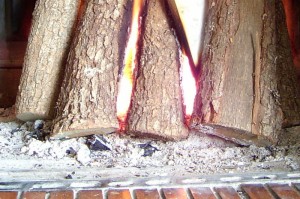Fireplace safety and maintenance isn’t second nature to most of us. And while most things—including annual inspections and cleanings—should be left to a professional, ash removal is generally the most hands-on a homeowner is required to be with their fireplace or stove. For that reason, it’s important to educate yourself about proper ash removal and disposal.
Those of us at Clean Sweep Anne Arundel County are also more than happy to answer any questions about ash removal. For a quick primer read our blog post on ash removal basics:
When Do I Need to Clean Ash from My Fireplace or Stove?
First, it’s good to know that the amount of ash created by your fire, and thus the frequency with which you’ll have to remove it, depends on the type of fuel you burn. Softwoods, for instance, generate more ash than hardwoods.
Many people mistakenly believe that you should remove the ash after each and every fire has been extinguished. However, the Chimney Safety Institute of America states that this isn’t always a good idea, saying, “Having a 1-inch layer of ash on the floor of the firebox during the regular heating season will make it easier to build and maintain a fire. The hot coals tend to nestle into the ash and glow, adding more heat to the fuel and reflecting the heat back into the fire.”
A good rule of thumb is to clean your ash once it is close to coming into contact with the grate onto which you set your firewood. In addition, you may want to consider removing just the ash but leaving as many hot coals as you can. Leaving these coals in place may make it easier to build future fires since the firebox brick will remain warm. Further food for thought: A light layer of ash is actually helpful in that it can protect the floor of your firebox from wear and tear.
Once the burning season has ended, we do recommend completely removing any ash from your fireplace or stove. Otherwise the ash may attract moisture, which can lead to rust inside your heating appliance. Because of the acidic nature of ash it can also lead to the deterioration of masonry and metal if left to sit too long.
Furthermore, a professional chimney sweep at the end of the burning season will assure you that your fireplace and chimney are in tip-top shape.

